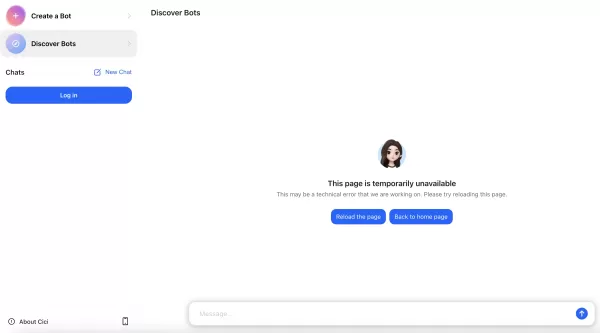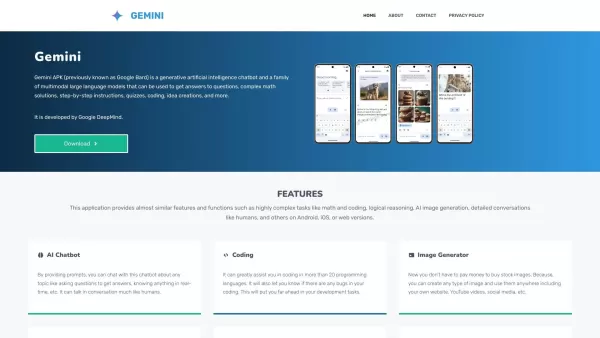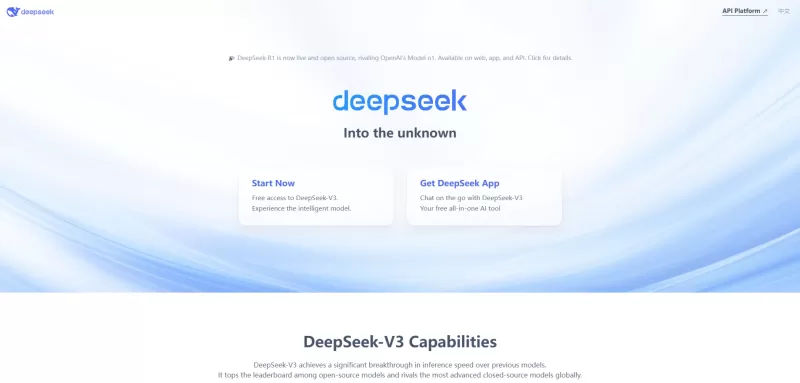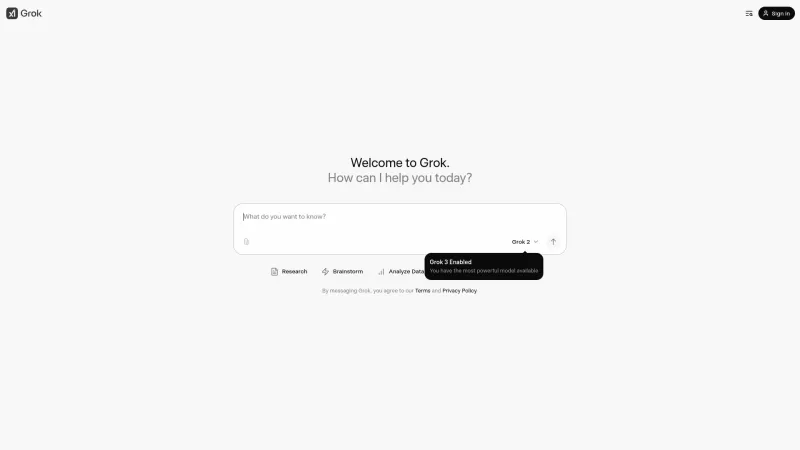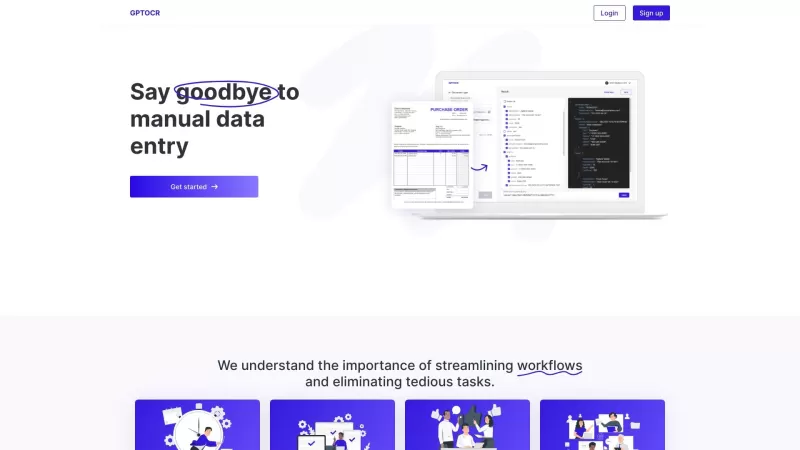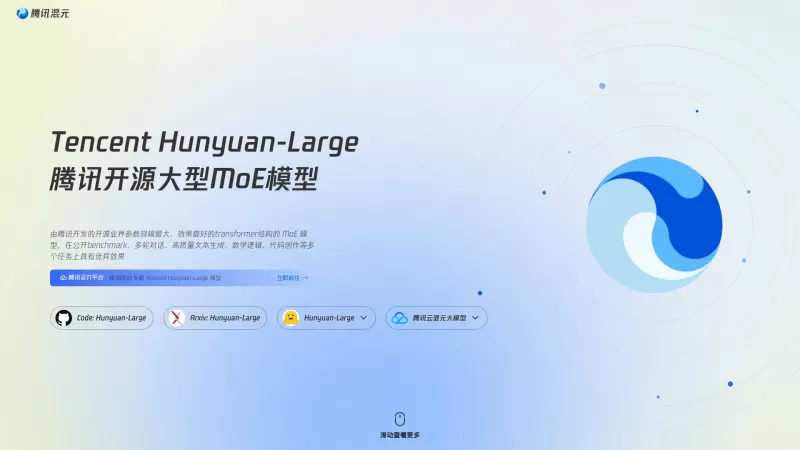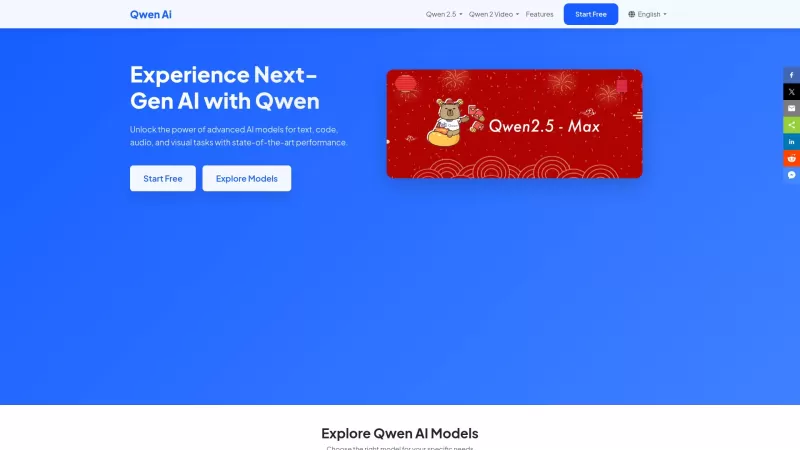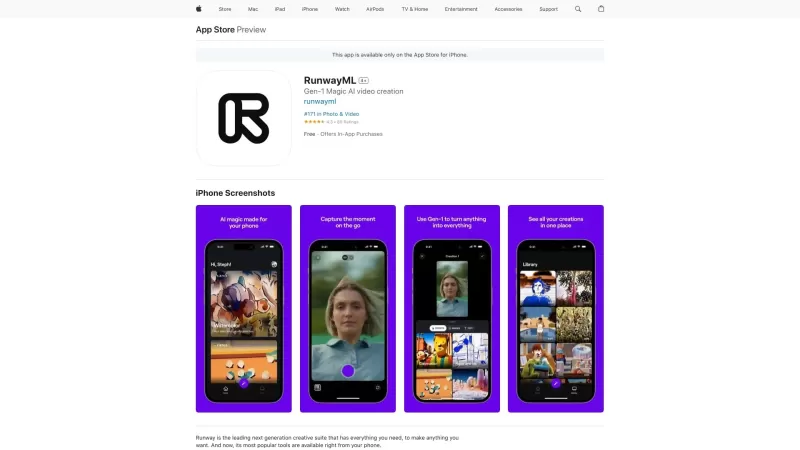AI-Driven Travel Planning: Transforming Vacation Experiences
Picture crafting your ideal vacation with artificial intelligence, effortlessly handling everything from choosing the perfect destination to fine-tuning your daily schedule. AI-powered travel planners are reshaping the travel industry, delivering tailored suggestions and efficient tools customized to your preferences. This guide dives into the vision, technical needs, and features of these cutting-edge AI tools, showcasing their game-changing impact on trip planning. Whether you’re craving a serene beach escape or a thrilling adventure, learn how AI can create a seamless travel experience, saving time, reducing stress, and making every moment memorable.
Key Points
AI-driven travel planners use machine learning to deliver customized trip suggestions.
These tools simplify itinerary creation, ensuring every moment of your trip is optimized.
Core requirements include evaluating AI models, sourcing training data, and deploying the model as a service.
User interfaces offer a smooth experience with split-screen designs for interaction and results.
Advanced features like natural language processing and real-time updates boost user satisfaction and efficiency.
The Vision of AI-Driven Travel Planning
What is an AI-Driven Travel Planner?
An AI-driven travel planner is an advanced tool that crafts personalized, efficient travel itineraries using artificial intelligence. Unlike traditional methods, these planners harness machine learning to understand user preferences, recommend relevant destinations, and optimize schedules with real-time data.

The goal is to turn the often daunting task of trip planning into a smooth, enjoyable process.
Key features include:
- Tailored suggestions: AI evaluates user preferences, including past trips, interests, and budget, to recommend destinations and activities.
- Smart itinerary creation: The planner generates detailed schedules, optimizing routes, activities, and downtime based on user input.
- Real-time updates: AI monitors factors like weather, traffic, and local events, dynamically adjusting plans as needed.
- Natural language interaction: Users communicate with the planner using conversational language for an intuitive experience.
- Travel service integration: The planner connects seamlessly with booking platforms for flights, accommodations, and activities.
The core idea is that everyone deserves a hassle-free vacation, and AI makes this possible by automating tedious planning tasks, letting users focus on the excitement of their trip.
How AI Improves Traditional Travel Planning
Traditional trip planning often involves hours of research, browsing guides, reading reviews, and comparing prices. While some enjoy this, many find it overwhelming. AI-driven planners enhance this by automating key tasks and offering data-driven insights.
Here’s how AI outshines traditional methods:
- Speed: AI processes vast datasets instantly, finding optimal routes, accommodations, and schedules faster than humans.
- Customization: AI learns user preferences over time, delivering highly personalized recommendations that generic guides can’t match.
- Accuracy: Real-time data monitoring ensures up-to-date information on weather, traffic, and events, enabling dynamic plan adjustments.
- Cost savings: AI finds the best deals on flights, accommodations, and activities, helping users stay within budget.
- Stress relief: By automating planning and providing reliable insights, AI minimizes travel-related stress, letting users enjoy their journey.
In short, AI turns trip planning into a seamless, tailored experience, making unforgettable journeys effortless.
Technical Requirements and Infrastructure
Essential Technologies for AI Travel Planners
Creating an effective AI-driven travel planner demands a strong technical foundation. Key technologies include:
- Machine Learning (ML): ML algorithms analyze user data to deliver tailored recommendations, using techniques like collaborative and content-based filtering.
- Natural Language Processing (NLP): NLP allows conversational user interactions, leveraging sentiment analysis and entity recognition for accurate responses.
- Data Integration: Planners connect with travel platforms, weather APIs, and event databases for accurate, real-time information.
- Cloud Computing: Platforms like AWS, Azure, or Google Cloud provide scalability and power for processing large datasets and user requests.
- Containerization: Tools like Docker package the planner into portable units for consistent deployment across environments.
- API Management: APIs ensure smooth communication between the interface, AI algorithms, and external data sources.
Here’s an example of data used by AI planners:
Data Category Description User Profiles Travel history, preferences, budget, interests Destination Data Accommodations, activities, event schedules, weather Booking Data Flight availability, accommodation prices, activity costs, travel times
Steps to Implement an AI Travel Planner
Building an AI travel planner involves clear steps to ensure functionality and accuracy:
- Assess AI Model Needs:
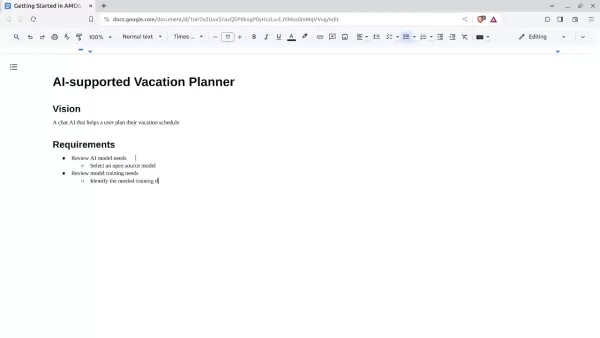
Evaluate existing AI models for accuracy, scalability, and integration suitability.
- Choose an Open-Source Model: Select a customizable, cost-effective model like transformer-based systems for travel-specific tasks.
- Determine Training Needs: Identify data requirements to optimize model performance.
- Collect Training Data: Gather travel history, user reviews, and destination data using public datasets or web scraping.
- Curate Data: Clean and format data to ensure high-quality training inputs.
- Containerize the Model: Use Docker to package the model for consistent deployment.
- Enable Model Training: Implement a function to update the model with new data.
- Support User Queries: Allow users to ask questions and receive tailored recommendations.
- Retrain the Model: Regularly update the model to reflect new trends and preferences.
- Split-Screen Interface: Design a user interface with one side for input and the other for the itinerary.
- Left Side for Interaction: Dedicate one half for users to enter preferences and questions.
- Right Side for Itinerary: Display the AI-generated day-by-day schedule.
These steps enable developers to build effective, user-friendly AI travel planners that revolutionize trip planning.
Getting Started with an AI Travel Planner
How to Begin AI Travel Planning
Using an AI travel planner is straightforward. Start by entering travel dates, preferences, and interests. Then, ask specific questions about your trip, such as activities for limited mobility or unique dining options. The AI builds a customized itinerary tailored to your needs.
Understanding the Cost of AI Travel Planners
Factors Affecting Pricing
AI travel planner costs vary based on:
- Subscription Plans: Tiered plans offer different features and usage limits.
- Pay-Per-Use: Charges based on generated itineraries or data processed.
- Feature Complexity: Advanced features like real-time updates or NLP may increase costs.
- Data Integration: Connecting to booking platforms or APIs can add expenses.
- Support and Updates: Dedicated support and regular updates may raise prices.
Explore the market to compare pricing models.
Evaluating AI Travel Planners’ Benefits and Drawbacks
Pros
Tailored Suggestions: AI customizes recommendations to enhance your travel experience.
Efficient Planning: Automates itinerary creation, optimizing routes and schedules.
Real-Time Updates: Adapts to changing conditions for seamless travel.
Cost Savings: Finds the best deals to maximize budgets.
Stress Relief: Reduces planning burdens for a relaxed experience.
Cons
Data Dependency: Recommendations rely on quality training data.
Limited Spontaneity: Over-reliance may reduce unexpected discoveries.
Costs: Advanced planners may involve subscriptions or fees.
Technical Glitches: Systems may face occasional errors.
Privacy Risks: Sharing personal data raises security concerns.
Key Features of a Successful AI Travel Planner
Essential Functionalities
A top AI travel planner includes:
- Tailored Suggestions: Custom recommendations for destinations and activities.
- Smart Itineraries: Optimized schedules based on user preferences.
- Real-Time Updates: Adjusts plans for weather, traffic, or events.
- Natural Language Interaction: Conversational interface for ease of use.
- Travel Service Integration: Direct access to booking platforms.
- Budget Management: Identifies cost-effective options.
- Intuitive Interface: Easy navigation for all users.
- Mobile Access: Plan trips on the go.
These features ensure a seamless, valuable planning experience.
Diverse Use Cases for AI Travel Planners
How AI Revolutionizes Travel
AI travel planners cater to varied needs:
- Leisure Travel: Craft personalized vacation itineraries.
- Business Travel: Optimize schedules for productivity.
- Group Travel: Coordinate plans for shared activities.
- Special Needs: Offer tailored recommendations for accessibility or dietary needs.
- Last-Minute Trips: Quickly generate itineraries for spontaneous travel.
These use cases highlight AI’s versatility in transforming travel.
FAQ
What data trains AI travel planners?
Models use travel history, user reviews, destination details, and real-time data, including user preferences.
Are AI planners suitable for all travel types?
Yes, they adapt to leisure, business, group, and special needs travel, offering tailored itineraries.
How do AI planners handle real-time changes?
They monitor weather, traffic, and events, adjusting plans dynamically for a smooth experience.
Related Questions
How to retrain AI travel models?
Update models with new data using frameworks like TensorFlow or PyTorch to maintain accuracy.
What languages are AI models written in?
Python is the primary language for AI models.
Related article
 Metaforms Secures $9M Funding to Transform Market Research Using AI Agents
Revolutionizing Market Research Through AI-Powered AutomationThe market research industry faces mounting pressure as client demands grow increasingly complex while timelines shrink dramatically. Metaforms, an emerging AI innovator, has secured $9 mil
Metaforms Secures $9M Funding to Transform Market Research Using AI Agents
Revolutionizing Market Research Through AI-Powered AutomationThe market research industry faces mounting pressure as client demands grow increasingly complex while timelines shrink dramatically. Metaforms, an emerging AI innovator, has secured $9 mil
 Unlock AI-Powered Data Visualization with ChartAI's AI Charting Features
Key Features of ChartAIHarnessing artificial intelligence for smarter data visualization, ChartAI represents the cutting edge of technical analysis tools. This innovative platform transforms complex market data into clear, actionable insights for tra
Unlock AI-Powered Data Visualization with ChartAI's AI Charting Features
Key Features of ChartAIHarnessing artificial intelligence for smarter data visualization, ChartAI represents the cutting edge of technical analysis tools. This innovative platform transforms complex market data into clear, actionable insights for tra
 New AI Copyright Payment System Emerges to Compensate Creators Online
New Content Licensing Standard Emerges for AI DevelopmentA groundbreaking licensing framework is emerging to help web publishers define how AI developers can utilize their content. This week, prominent platforms including Reddit, Yahoo, Medium, Quora
Comments (2)
0/200
New AI Copyright Payment System Emerges to Compensate Creators Online
New Content Licensing Standard Emerges for AI DevelopmentA groundbreaking licensing framework is emerging to help web publishers define how AI developers can utilize their content. This week, prominent platforms including Reddit, Yahoo, Medium, Quora
Comments (2)
0/200
![ScottJackson]() ScottJackson
ScottJackson
 August 19, 2025 at 5:01:19 AM EDT
August 19, 2025 at 5:01:19 AM EDT
This AI travel planner sounds like a game-changer! I love how it picks destinations and sorts out schedules without the hassle. Anyone tried it yet? 😎


 0
0
![EricMartin]() EricMartin
EricMartin
 August 2, 2025 at 11:07:14 AM EDT
August 2, 2025 at 11:07:14 AM EDT
This AI travel planning sounds like a game-changer! I love how it can pick destinations and plan my day. Anyone tried it yet? 😎


 0
0
Picture crafting your ideal vacation with artificial intelligence, effortlessly handling everything from choosing the perfect destination to fine-tuning your daily schedule. AI-powered travel planners are reshaping the travel industry, delivering tailored suggestions and efficient tools customized to your preferences. This guide dives into the vision, technical needs, and features of these cutting-edge AI tools, showcasing their game-changing impact on trip planning. Whether you’re craving a serene beach escape or a thrilling adventure, learn how AI can create a seamless travel experience, saving time, reducing stress, and making every moment memorable.
Key Points
AI-driven travel planners use machine learning to deliver customized trip suggestions.
These tools simplify itinerary creation, ensuring every moment of your trip is optimized.
Core requirements include evaluating AI models, sourcing training data, and deploying the model as a service.
User interfaces offer a smooth experience with split-screen designs for interaction and results.
Advanced features like natural language processing and real-time updates boost user satisfaction and efficiency.
The Vision of AI-Driven Travel Planning
What is an AI-Driven Travel Planner?
An AI-driven travel planner is an advanced tool that crafts personalized, efficient travel itineraries using artificial intelligence. Unlike traditional methods, these planners harness machine learning to understand user preferences, recommend relevant destinations, and optimize schedules with real-time data.

The goal is to turn the often daunting task of trip planning into a smooth, enjoyable process.
Key features include:
- Tailored suggestions: AI evaluates user preferences, including past trips, interests, and budget, to recommend destinations and activities.
- Smart itinerary creation: The planner generates detailed schedules, optimizing routes, activities, and downtime based on user input.
- Real-time updates: AI monitors factors like weather, traffic, and local events, dynamically adjusting plans as needed.
- Natural language interaction: Users communicate with the planner using conversational language for an intuitive experience.
- Travel service integration: The planner connects seamlessly with booking platforms for flights, accommodations, and activities.
The core idea is that everyone deserves a hassle-free vacation, and AI makes this possible by automating tedious planning tasks, letting users focus on the excitement of their trip.
How AI Improves Traditional Travel Planning
Traditional trip planning often involves hours of research, browsing guides, reading reviews, and comparing prices. While some enjoy this, many find it overwhelming. AI-driven planners enhance this by automating key tasks and offering data-driven insights.
Here’s how AI outshines traditional methods:
- Speed: AI processes vast datasets instantly, finding optimal routes, accommodations, and schedules faster than humans.
- Customization: AI learns user preferences over time, delivering highly personalized recommendations that generic guides can’t match.
- Accuracy: Real-time data monitoring ensures up-to-date information on weather, traffic, and events, enabling dynamic plan adjustments.
- Cost savings: AI finds the best deals on flights, accommodations, and activities, helping users stay within budget.
- Stress relief: By automating planning and providing reliable insights, AI minimizes travel-related stress, letting users enjoy their journey.
In short, AI turns trip planning into a seamless, tailored experience, making unforgettable journeys effortless.
Technical Requirements and Infrastructure
Essential Technologies for AI Travel Planners
Creating an effective AI-driven travel planner demands a strong technical foundation. Key technologies include:
- Machine Learning (ML): ML algorithms analyze user data to deliver tailored recommendations, using techniques like collaborative and content-based filtering.
- Natural Language Processing (NLP): NLP allows conversational user interactions, leveraging sentiment analysis and entity recognition for accurate responses.
- Data Integration: Planners connect with travel platforms, weather APIs, and event databases for accurate, real-time information.
- Cloud Computing: Platforms like AWS, Azure, or Google Cloud provide scalability and power for processing large datasets and user requests.
- Containerization: Tools like Docker package the planner into portable units for consistent deployment across environments.
- API Management: APIs ensure smooth communication between the interface, AI algorithms, and external data sources.
Here’s an example of data used by AI planners:
| Data Category | Description |
|---|---|
| User Profiles | Travel history, preferences, budget, interests |
| Destination Data | Accommodations, activities, event schedules, weather |
| Booking Data | Flight availability, accommodation prices, activity costs, travel times |
Steps to Implement an AI Travel Planner
Building an AI travel planner involves clear steps to ensure functionality and accuracy:
- Assess AI Model Needs:

Evaluate existing AI models for accuracy, scalability, and integration suitability.
- Choose an Open-Source Model: Select a customizable, cost-effective model like transformer-based systems for travel-specific tasks.
- Determine Training Needs: Identify data requirements to optimize model performance.
- Collect Training Data: Gather travel history, user reviews, and destination data using public datasets or web scraping.
- Curate Data: Clean and format data to ensure high-quality training inputs.
- Containerize the Model: Use Docker to package the model for consistent deployment.
- Enable Model Training: Implement a function to update the model with new data.
- Support User Queries: Allow users to ask questions and receive tailored recommendations.
- Retrain the Model: Regularly update the model to reflect new trends and preferences.
- Split-Screen Interface: Design a user interface with one side for input and the other for the itinerary.
- Left Side for Interaction: Dedicate one half for users to enter preferences and questions.
- Right Side for Itinerary: Display the AI-generated day-by-day schedule.
These steps enable developers to build effective, user-friendly AI travel planners that revolutionize trip planning.
Getting Started with an AI Travel Planner
How to Begin AI Travel Planning
Using an AI travel planner is straightforward. Start by entering travel dates, preferences, and interests. Then, ask specific questions about your trip, such as activities for limited mobility or unique dining options. The AI builds a customized itinerary tailored to your needs.
Understanding the Cost of AI Travel Planners
Factors Affecting Pricing
AI travel planner costs vary based on:
- Subscription Plans: Tiered plans offer different features and usage limits.
- Pay-Per-Use: Charges based on generated itineraries or data processed.
- Feature Complexity: Advanced features like real-time updates or NLP may increase costs.
- Data Integration: Connecting to booking platforms or APIs can add expenses.
- Support and Updates: Dedicated support and regular updates may raise prices.
Explore the market to compare pricing models.
Evaluating AI Travel Planners’ Benefits and Drawbacks
Pros
Tailored Suggestions: AI customizes recommendations to enhance your travel experience.
Efficient Planning: Automates itinerary creation, optimizing routes and schedules.
Real-Time Updates: Adapts to changing conditions for seamless travel.
Cost Savings: Finds the best deals to maximize budgets.
Stress Relief: Reduces planning burdens for a relaxed experience.
Cons
Data Dependency: Recommendations rely on quality training data.
Limited Spontaneity: Over-reliance may reduce unexpected discoveries.
Costs: Advanced planners may involve subscriptions or fees.
Technical Glitches: Systems may face occasional errors.
Privacy Risks: Sharing personal data raises security concerns.
Key Features of a Successful AI Travel Planner
Essential Functionalities
A top AI travel planner includes:
- Tailored Suggestions: Custom recommendations for destinations and activities.
- Smart Itineraries: Optimized schedules based on user preferences.
- Real-Time Updates: Adjusts plans for weather, traffic, or events.
- Natural Language Interaction: Conversational interface for ease of use.
- Travel Service Integration: Direct access to booking platforms.
- Budget Management: Identifies cost-effective options.
- Intuitive Interface: Easy navigation for all users.
- Mobile Access: Plan trips on the go.
These features ensure a seamless, valuable planning experience.
Diverse Use Cases for AI Travel Planners
How AI Revolutionizes Travel
AI travel planners cater to varied needs:
- Leisure Travel: Craft personalized vacation itineraries.
- Business Travel: Optimize schedules for productivity.
- Group Travel: Coordinate plans for shared activities.
- Special Needs: Offer tailored recommendations for accessibility or dietary needs.
- Last-Minute Trips: Quickly generate itineraries for spontaneous travel.
These use cases highlight AI’s versatility in transforming travel.
FAQ
What data trains AI travel planners?
Models use travel history, user reviews, destination details, and real-time data, including user preferences.
Are AI planners suitable for all travel types?
Yes, they adapt to leisure, business, group, and special needs travel, offering tailored itineraries.
How do AI planners handle real-time changes?
They monitor weather, traffic, and events, adjusting plans dynamically for a smooth experience.
Related Questions
How to retrain AI travel models?
Update models with new data using frameworks like TensorFlow or PyTorch to maintain accuracy.
What languages are AI models written in?
Python is the primary language for AI models.
 Metaforms Secures $9M Funding to Transform Market Research Using AI Agents
Revolutionizing Market Research Through AI-Powered AutomationThe market research industry faces mounting pressure as client demands grow increasingly complex while timelines shrink dramatically. Metaforms, an emerging AI innovator, has secured $9 mil
Metaforms Secures $9M Funding to Transform Market Research Using AI Agents
Revolutionizing Market Research Through AI-Powered AutomationThe market research industry faces mounting pressure as client demands grow increasingly complex while timelines shrink dramatically. Metaforms, an emerging AI innovator, has secured $9 mil
 Unlock AI-Powered Data Visualization with ChartAI's AI Charting Features
Key Features of ChartAIHarnessing artificial intelligence for smarter data visualization, ChartAI represents the cutting edge of technical analysis tools. This innovative platform transforms complex market data into clear, actionable insights for tra
Unlock AI-Powered Data Visualization with ChartAI's AI Charting Features
Key Features of ChartAIHarnessing artificial intelligence for smarter data visualization, ChartAI represents the cutting edge of technical analysis tools. This innovative platform transforms complex market data into clear, actionable insights for tra
 New AI Copyright Payment System Emerges to Compensate Creators Online
New Content Licensing Standard Emerges for AI DevelopmentA groundbreaking licensing framework is emerging to help web publishers define how AI developers can utilize their content. This week, prominent platforms including Reddit, Yahoo, Medium, Quora
New AI Copyright Payment System Emerges to Compensate Creators Online
New Content Licensing Standard Emerges for AI DevelopmentA groundbreaking licensing framework is emerging to help web publishers define how AI developers can utilize their content. This week, prominent platforms including Reddit, Yahoo, Medium, Quora
 August 19, 2025 at 5:01:19 AM EDT
August 19, 2025 at 5:01:19 AM EDT
This AI travel planner sounds like a game-changer! I love how it picks destinations and sorts out schedules without the hassle. Anyone tried it yet? 😎


 0
0
 August 2, 2025 at 11:07:14 AM EDT
August 2, 2025 at 11:07:14 AM EDT
This AI travel planning sounds like a game-changer! I love how it can pick destinations and plan my day. Anyone tried it yet? 😎


 0
0

